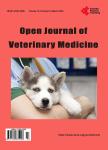<i>Balantidium coli</i>in Pigs Regularly Slaughtered at Abattoirs of the Province of Messina: Hygienic Observations
<i>Balantidium coli</i>in Pigs Regularly Slaughtered at Abattoirs of the Province of Messina: Hygienic Observations作者机构:Department of Veterinary Public Health Section of Inspection of Food of Animal Origin Faculty of Veterinary Medicine University of Messina Messina Italy
出 版 物:《Open Journal of Veterinary Medicine》 (兽医学(英文))
年 卷 期:2012年第2卷第2期
页 面:77-80页
学科分类:1002[医学-临床医学] 100214[医学-肿瘤学] 10[医学]
主 题:Foodborn Pathogens Balantidium coli Nero Siciliano Pigs Commercial Hybrid
摘 要:Balantidium coli is a zoonotic protozoan parasite, and pork is considered the major source of Balantidium infection in humans. Transmission is direct and commonly occurs through the ingestion of water and food, especially vegetables, contaminated with infectious cysts. Ingestion of meat contaminated, with faecal material during the evisceration process, can represent a potential risk of B. coli transmission. In order to determine the rate of B. coli infection in pigs regularly slaughtered at abattoirs in the province of Messina (Sicily, Italy), faecal samples of 242 pigs (122 commercial hybrid and 120 Nero Siciliano pigs) were collected and evaluated by standard methods for the presence of trophozoites and/or cysts. A total of 105 of the commercial hybrid (86.06%), but only 44 of the Nero Siciliano (36.66%) pigs, were identified as positive for B. coli infection. The results obtained, may be linked to the type of farming employed.



